May 8th, 2013 §
Once all the rocks were in place, I covered the turf that extended into the bed with newspaper several sheets thick. This grass-killing trick had been effective when I used it under the mulch rings I placed around my trees. Then I went in to the woods and dug up bucket loads of loamy topsoil, mostly with a shovel so I could pick out the rocks, sticks and vines as I went.
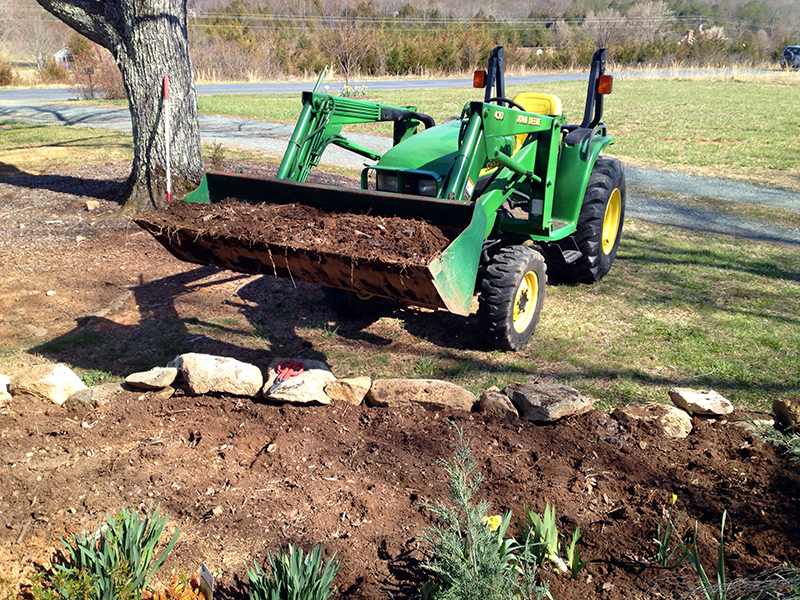
I dumped this topsoil into the new bed space, on top of the newspaper and up against the back wall of rocks, in effect forming a raised bed around two sides of the house.
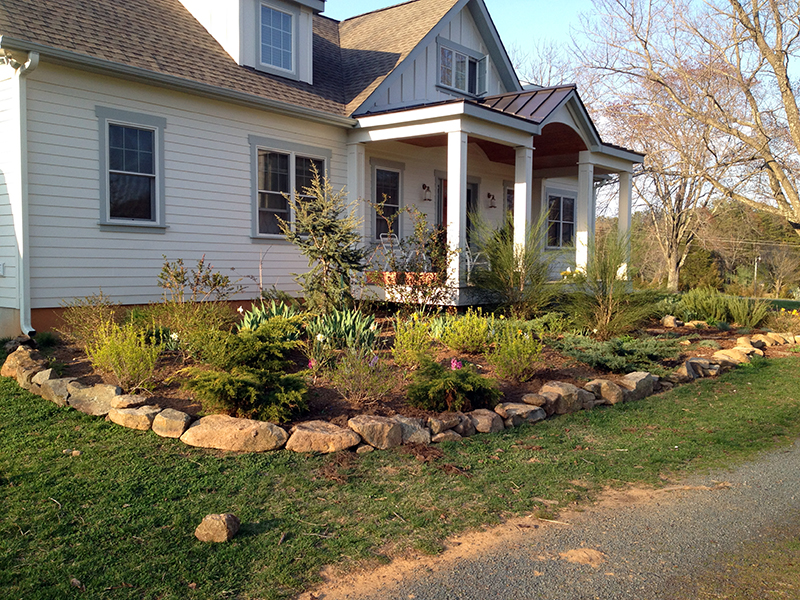
Then on April 10 I called my favorite mulch guy and had ten yards of double shredded hardwood mulch dropped near the woods. This is prettier—and more expensive—than the pine bark nuggets I buy for mulching around my big trees (below, on the ground). It will also break down much faster, helping to enrich the soil as it does.

I spent a day hand-forking the aforementioned ten yards of mulch into my garden. It was super-tricky, delicate work as many of my perennials were just starting to emerge and hard to see, and I didn’t want to smother them.
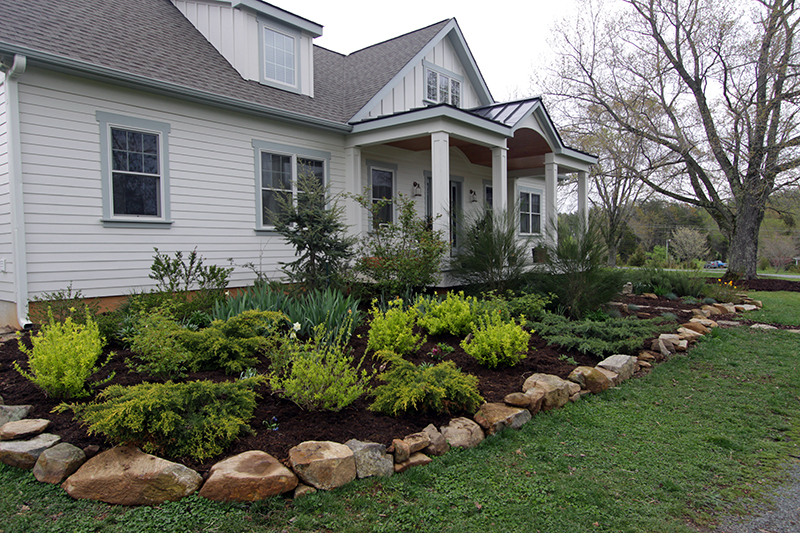
But after eight hours of mulching and only a few blisters across my palms, it was done. And looked pretty nice, I thought. There are a few spots that can use another stone or two, but I will fill those in once I’ve fully recovered.
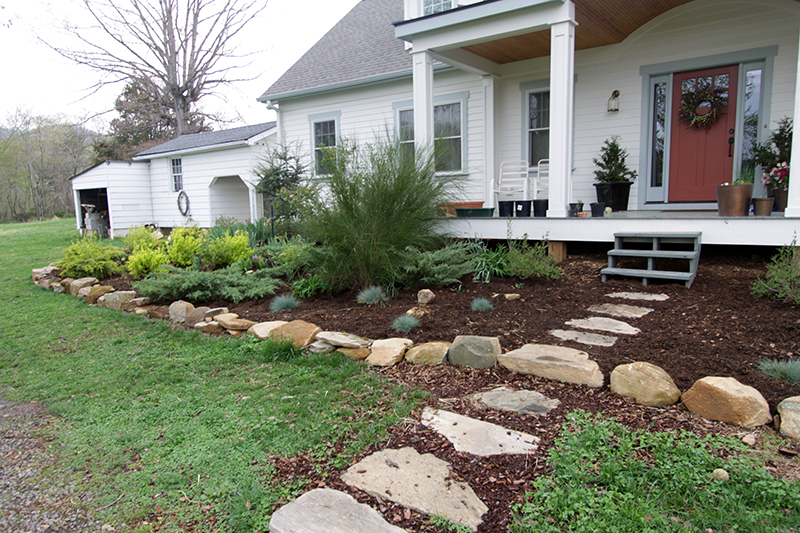
It’s not the fancy hardscape I’d most love, but for $285 worth of mulch and untold hours of bodybreaking labor, I finally have some decent-looking garden beds that are in keeping with the informal, cottage nature of the house. What’s more, this project massively contributes toward my goal of making maintenance around here as easy as possible. Now I just run the string trimmer right up against the rocks—which means no more futile hours spent hacking enroaching turf out of the beds. Plus, the mulch will help keep weeds out and moisture in during the hot summer while feeding the soil and coddling the earthworms beneath.
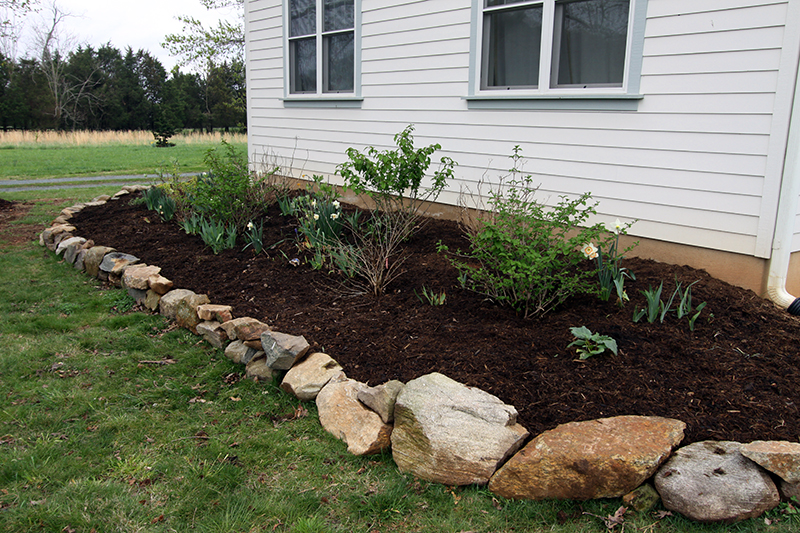
And, I am really excited to have gained a bit more extra bed space, complete with pretty decent soil—thanks, forest! I have already started planting some fun new additions, including peonies for the shadier areas and sedums for the sunny front corner. My plan is to eventually colonize the rock wall with sedums growing over it and through the spaces between rocks.
The garden has really come on in the weeks since these pictures were taken, so a little virtual plant walk will be coming soon.
May 7th, 2013 §
Much of March and April was devoted to building a rock wall around the front and road-facing side of the house. I’d grown tired of hacking turf out of the unedged beds, and the bed on the side of the house that faces the road was too steep to hold water on the plants in it. As you can see below, within the stone wall, it wasn’t a good look. Last summer I’d gotten some quotes to build a nice stone retaining wall around this end of the house and around the front, with a flagstone front walk and stairs. The quotes ranged from $8,000-$18,000, which just wasn’t in the budget at this time in my life.
So I started pulling rocks out of piles in the woods and used the tractor to get them near the house. Some of these rocks were the foundation of the house I tore down to build mine, and others no doubt came from clearing the pastures way back when. All winter long I played around with the rocks, moving them many times until I got them arranged in a line I liked and that would almost double the depth of the bed on this front corner of the house.
I had really low expectations for this project, as I think rock-edged beds can be pretty stupid looking. And I know that a proper rock wall is dug into the ground for stability and protection against frost heave. But I made peace with the idea that this didn’t have to be a perfectly permanent solution, and I figured that if I used rocks that were as large as I could handle the installation would appear more like a rock wall and less like a line of rocks, which is exactly what it looked like below, during the head-scratching phase of this project.
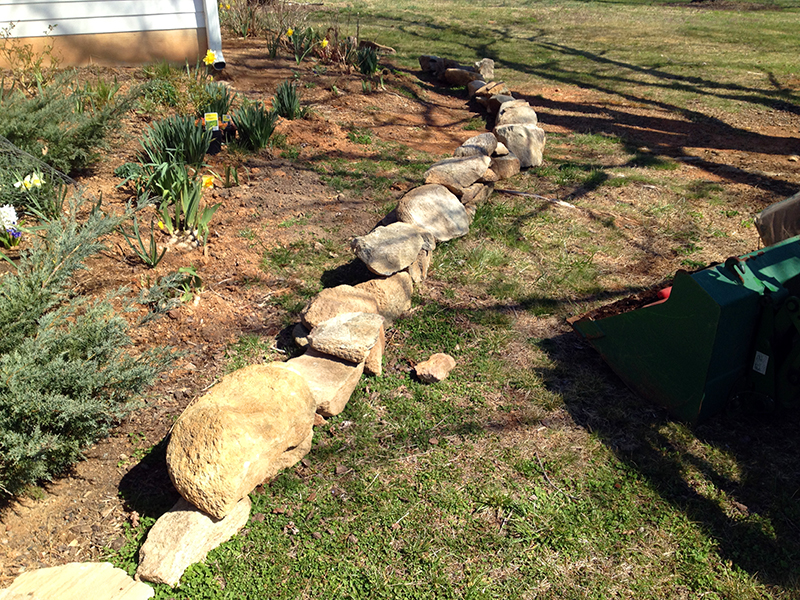
I’d been having trouble with runoff from the downspout in the above photo. Every time it rained, water ran down the bed and pooled near a maple tree in the yard, messing up its mulch ring and eroding the bank. So I figured that I’d take care of this issue by burying a drainage pipe under the bed I was expanding. It was easy to dig it in and hide its opening at the inside edge of the new wall. The bottom of the pipe is dotted with quarter-sized holes that let water escape as it flows away from the downspout.
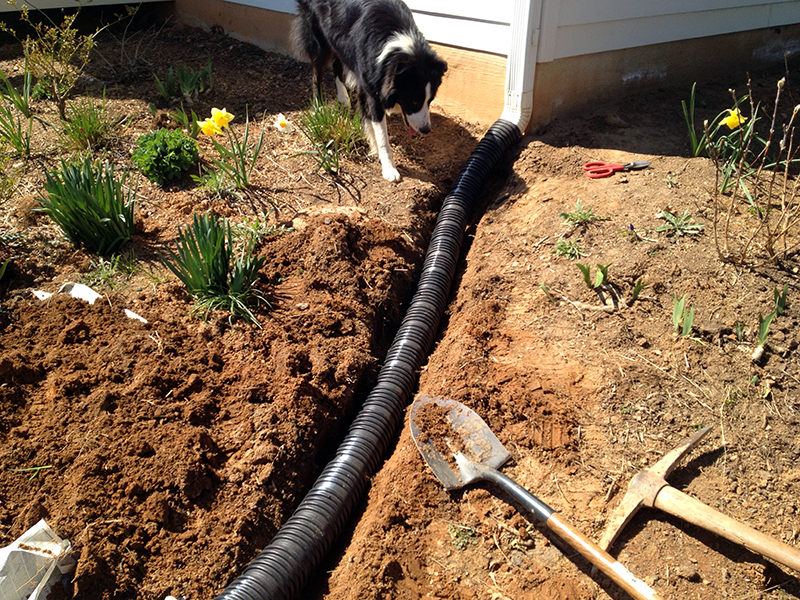
Then I went back to the woods for more rocks, some of which took every ounce of my strength and willpower to budge into the tractor bucket. I don’t remember how many trips it took, but there are 173 rocks in this installation and many are not insignificantly sized.
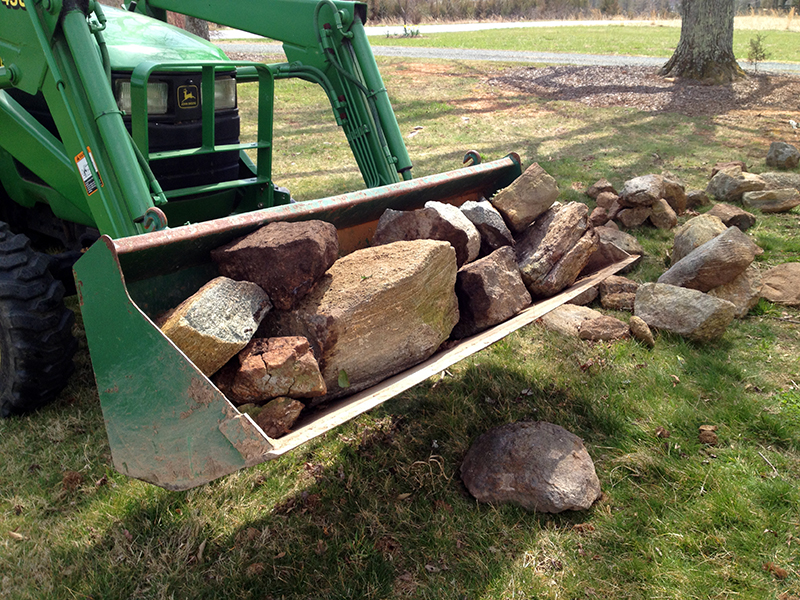
I spent days fiddling with rocks, turning each this way and that, trying my best to fit them into a wall-like configuration. Of course this week coincided with our freak 90-degree April heat wave. Let’s just say I got tan and back to my summer weight during this heavy-labor boot camp!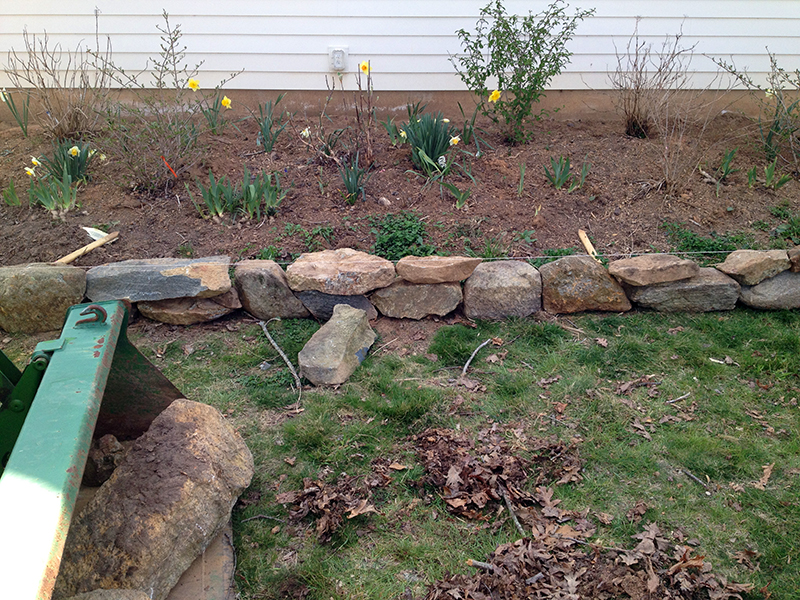
Up next, the wall continues…
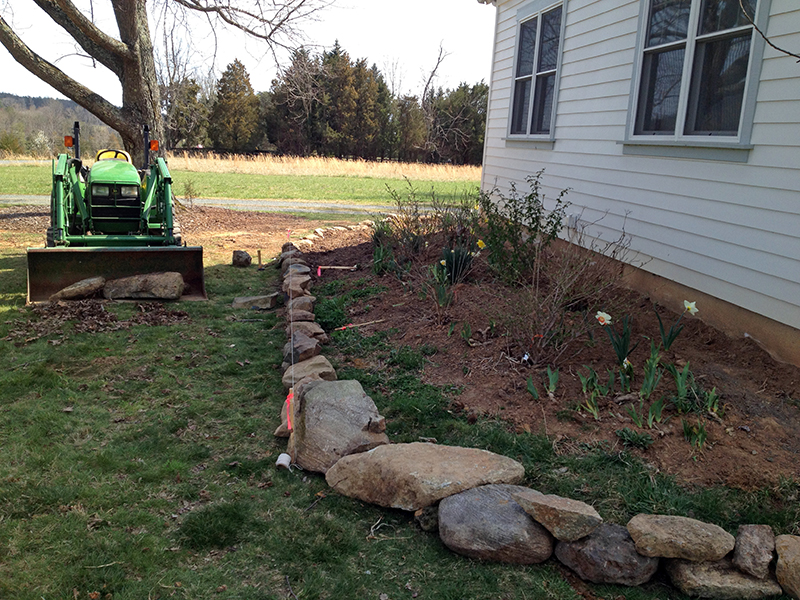
November 1st, 2012 §
So Hurricane Sandy has come and gone. She brought many hours of wind so loud that it sounded like an ocean inside my house—ironic given how many people ended up with actual ocean in their homes from this storm. Just before four on Monday the power went out as I had anticipated it would. 
Except for the awful wind noise outside, I was pretty cozy with the Jotul fired up for the first time this season. The wind blew rain down the chimney, rain penetrated the seal between chimney and roof and ran down the front of my fireplace, inside. All night long I listened to rainwater sizzle as it hit the hot stove pipe. Thankfully the blizzard warning my area was under never amounted to any snow, but from my house I can see snow in the Blue Ridge mountains to the west.
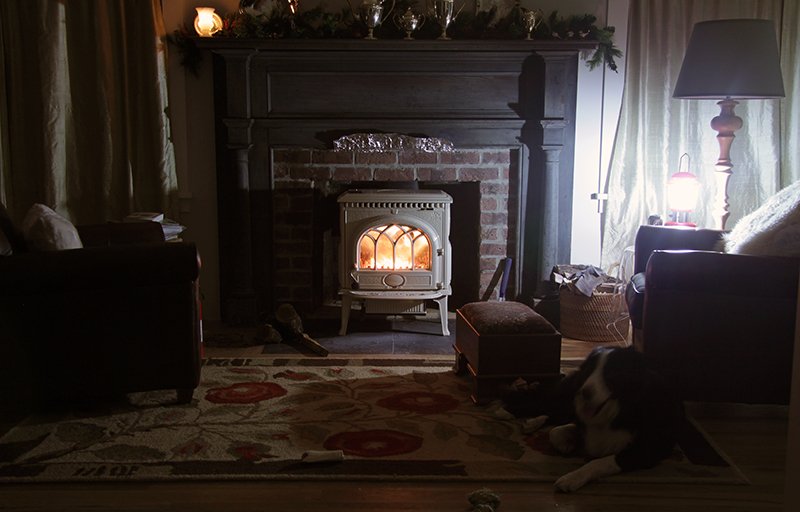
In the morning I went out to survey the damage. The well house lost quite a few more shingles from its roof, a trend begun with the derecho in June. Tree branches fell, screens flew out of windows, the garden was smashed.
I’d come home from my trip to the prettiest stand of snow peas I’d ever grown, just starting to form pods and full of flowers, underplanted with thriving arugula:
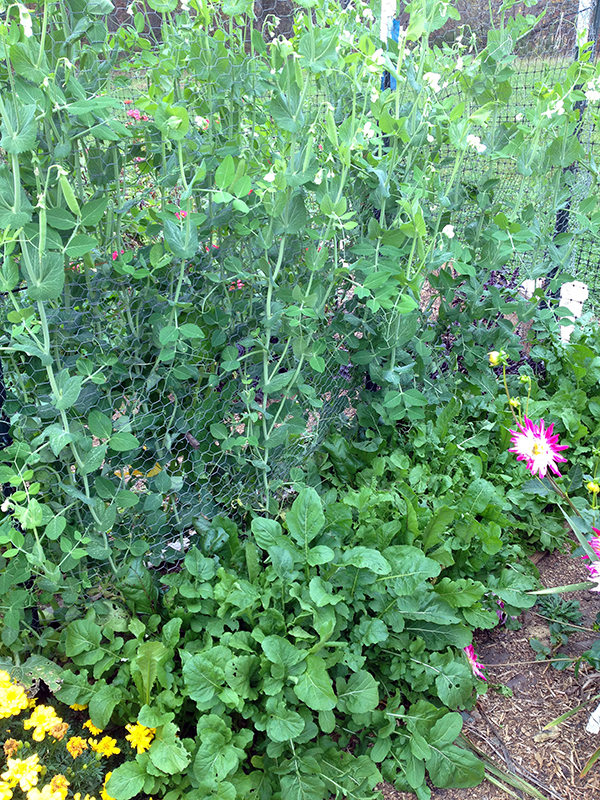
After Sandy:
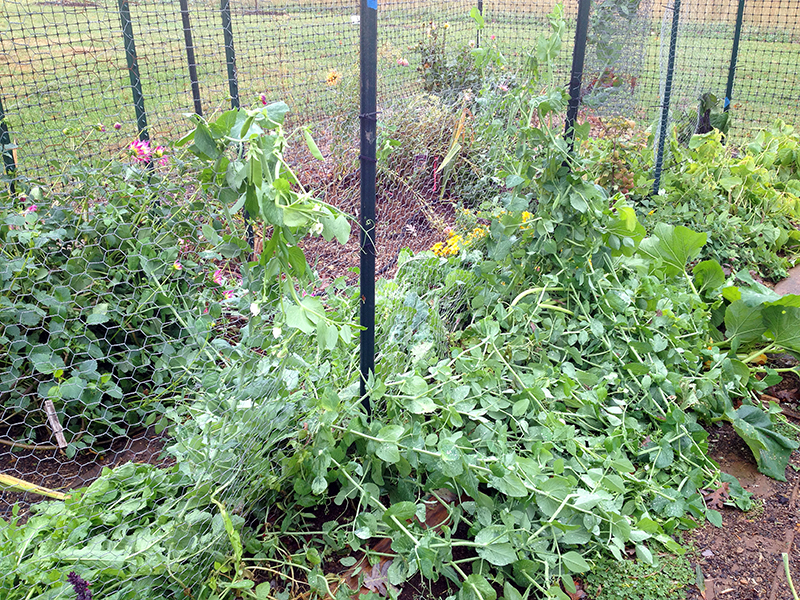
And my dahlias are toast. Before the storm, that orange one below stood taller than my 5′8″ height.
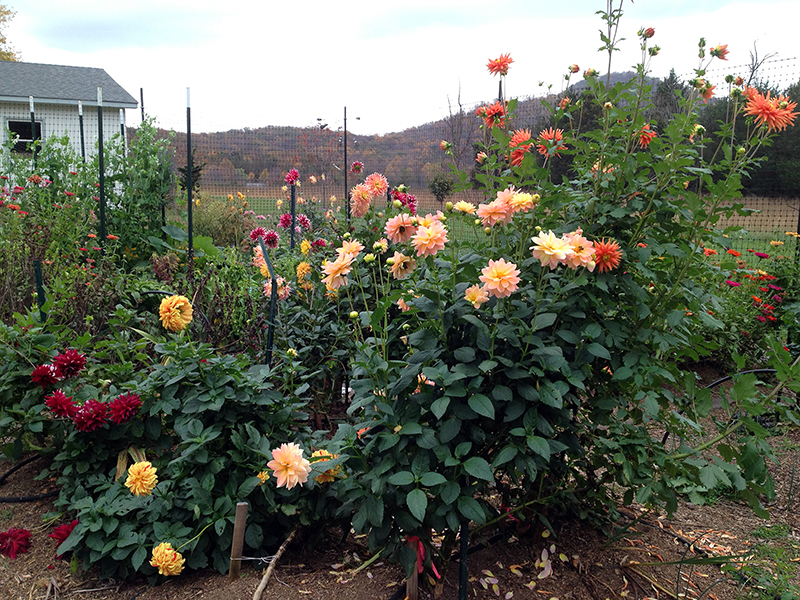
After Sandy:

Compared to many other folks, I got off easy with this one and have no right to complain. Twenty-four hours without power was no big deal, and nothing but the garden suffered irreparable damage. It’s the end of the season, so it’s only a matter of days until frost blackens most of those plants anyway. But it is my favorite season in the garden, when moisture tends to be plentiful, heat and bugs relent, and most crops and flowers are on autopilot and keep surprising with unexpected last-minute gifts made all the more precious because I know that each harvest could be the last of the year.
Anyway, Sandy has cleared out and now it’s time to go pick up tree branches, fix the blackberry cages that were leveled, collect the well house shingles that are scattered about the yard, and see what I can salvage from the garden.
I hope that wherever you are you weathered well.
September 29th, 2012 §
I got up this morning and, all inspired by the things I learned from Patricia Foreman at the Mother Earth News Fair, decided to turn my chickens loose in my garden. There’s not too much in it now other than flowers and some last-ditch attempts at peas, beans and greens, and I figured that if the chickens took a shining to any of those it’d be no big loss. What I’m really after is pest control.
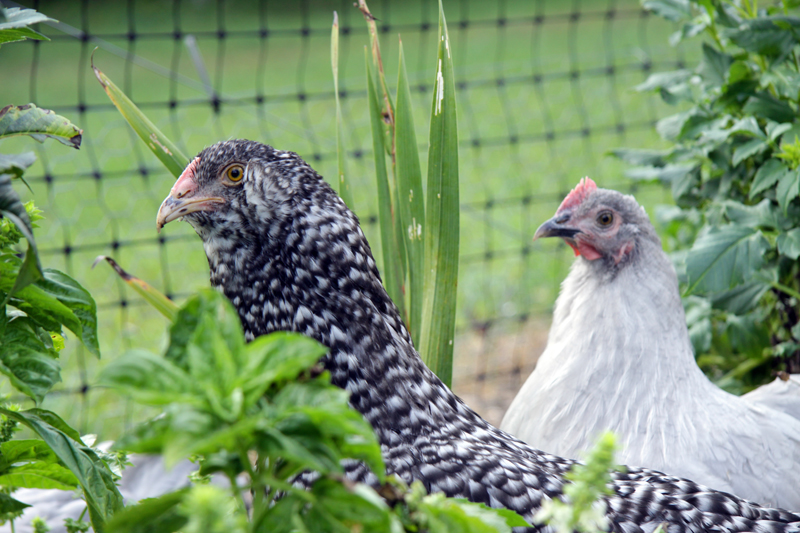
I caught each bird in the coop and plopped them in the garden, which when closed up in a fairly predator-proof arrangement. I wasn’t too worried about hawks as the dahlias and zinnias were tall and thick enough to provide good cover. Plus, I have a farm dog who took it upon himself to add “vigilantly defends against threats from the sky” to his long list of qualifications.
I checked on the birds throughout the day while I did one of my least-favorite farm chores, mulching around my trees. I wanted to make sure Lilac, who until now had been confined in a dog crate in the coop because she showed murderous tendencies toward Cora, was playing nicely. Everyone was fine all day.

Around five tonight I realized I’d better figure out how to get the birds back in their coop. Now, seven of my nine birds had never ventured further than their little redneck chicken run, and I couldn’t expect to just open the garden door and have them know how to find home. And chasing—and most likely losing—birds that had no ability to figure out how to get to bed before dark induced cringe-worth flashbacks to all the drama suffered with my guineas. I needed another plan.
So I did what any scrappy homesteader would do and looked around for something to repurpose for my needs. I found what I was looking for in a roll of netting that’s usually used to protect bushes from browsing deer. It’s much finer, and therefore easier to handle, than the heavy-duty plastic deer fencing I used around the garden and to make the chicken run. Plus, in addition to an almost new roll, I even had some already used netting balled up in a corner of the garage. I’d stuffed it there after I’d found it in the wellhouse, where it served as a death trap to what was by now a well-dessicated black snake. It’s been long enough that my memory of cutting that rotten snake out of the netting has faded, so I grabbed that piece as well.
A few clothespins later and I’d fashioned a corridor from the garden door into the chicken run. I opened the netting that serves as my garden door and within a second Cora and Calabrese strutted home.
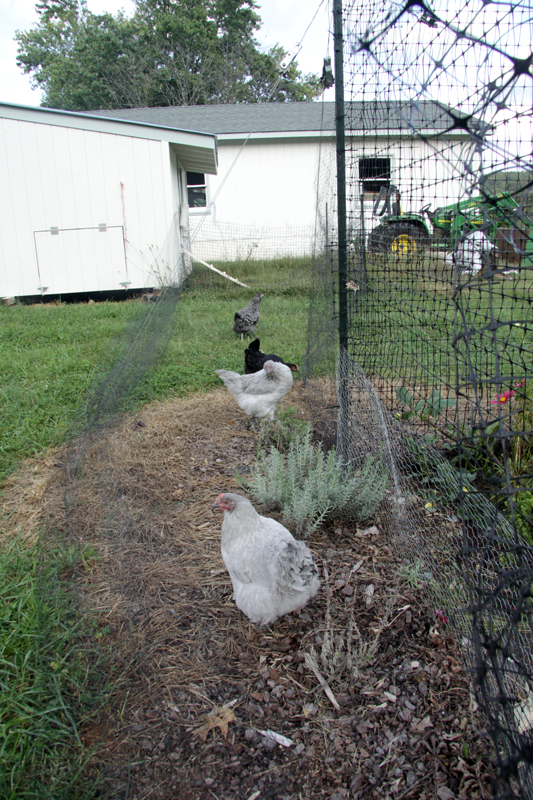
The rest of the birds took a bit of convincing, with Iris and Lilac, who are used to freeranging (and begging for scratch feed) bringing up the rear.
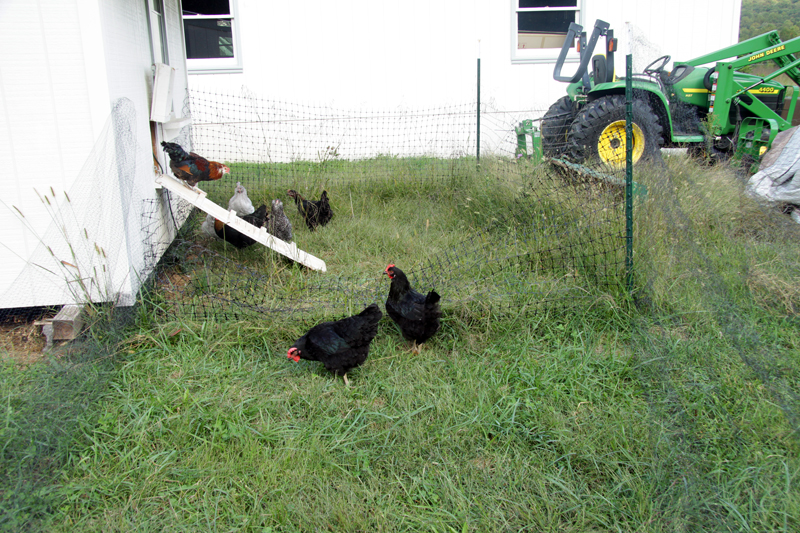
But they too joined the flock in the run, and from there they jumped back in their house to gorge on chicken feed like they hadn’t just spent eight hours enjoying all the wild delicacies of a late-summer garden.
I’ve left left Lilac loose with the flock instead of returning her to her punitive crate. I hope that she decides to be a get-along gal, or she may need to find herself another home. It will be another nerve-wracking morning when I open the coop tomorrow, unsure of what I may find. Let’s hope it’s nine nonbleeding chickens.
In other chicken news, I put a timer on the coop light this morning to artificially extend the hens’ day, thus inducing them to continue to lay through the winter. When the length of daylight slips below about fourteen hours, most hens will stop laying. Last year I didn’t use a light, and Lilac and Iris took a break from laying during the darkest part of the year.
The jury is out on whether it’s “good” or “bad” to have hens lay throughout the winter, with some camps claiming that the hens need the winter to rest even though the original chickens lived near the equator, where daylight hours don’t expand and contract with the seasons they way they do in Virginia. Several variables factored in to my decision, the first being that last winter when my hens weren’t laying I was buying eggs from Joel Salatin’s operation, Polyface Farm. If he was doing something to keep his hens laying in winter, why wasn’t I? Somebody’s hen, somewhere, will have to work through the winter so it might as well be mine. Second, the cost of feed has risen to more than $15 per 50 lb. bag. With each hen eating about a quarter pound of feed a day (thus my experiment to have the chickens forage for a larger percent of their diet), it doesn’t make economic sense to not be getting something out of the bird. As much as I love my chickens, they are not freeloading pets. And even my house pets, a dog and a cat, work for their food in myriad ways. Finally, I got a late start with chicks this year and have six hens—two lavender orpingtons, two black copper marans, a barred olive egger, and a wheaten ameraucana, who have yet to begin laying. I don’t really want to wait until next spring to see the rainbow of eggs they’re expected to produce, so I hope that extra light in the winter will get them in to production before next spring. That light’s coming on in the coop starting at 5:00 a.m. tomorrow, so we’ll see what happens!





















